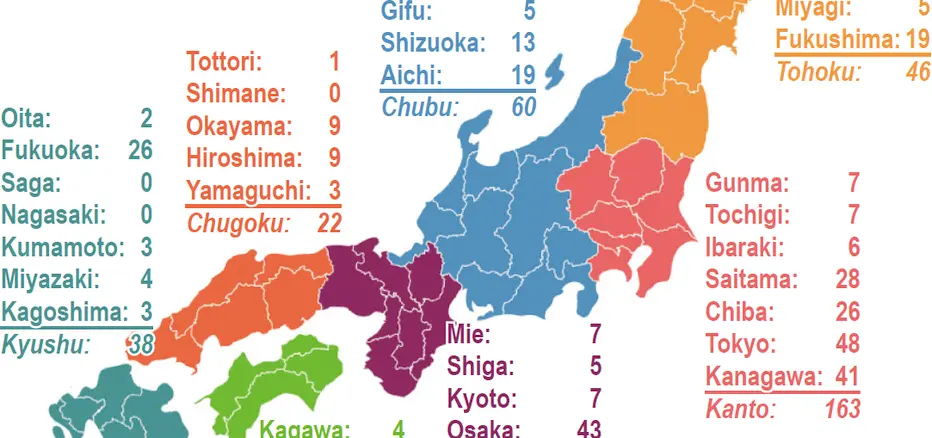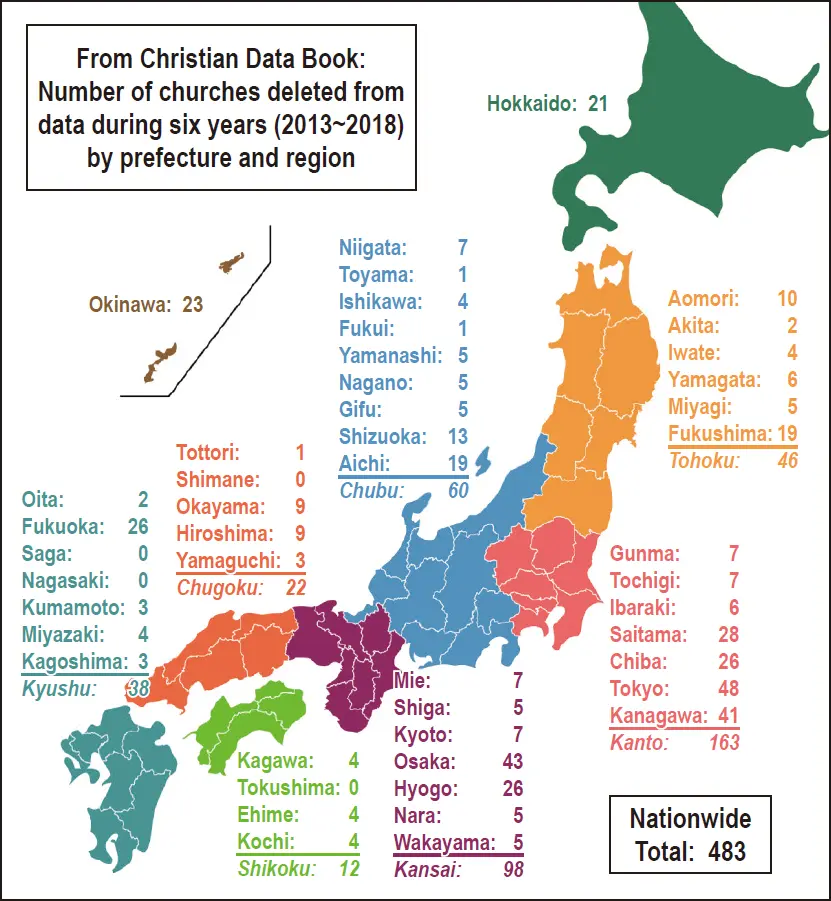The sustainability of the church—despite it all, churches must survive

Decreasing population, declining birthrate, an aging population, a society with high mortality—these truths have of course also been surging through Christian churches, and we rarely recognize that the growth of our mission force has started slowing down, even diminishing. The data on the previous page on the number of churches removed from national church listings, based on numbers from the Christian Data Book over six continuous years, was collated in order to get a sense of how many churches actually disappeared each year.
The Christian Data Book (published annually by Christian Shimbun from 2000 to 2018) provided concrete information about every Protestant church across Japan, according to the data collected by questionnaires answered by their staff. From 2010, the book arranged the number of churches by prefecture and mapped the increase and decrease compared with the previous year as “the aggregated data of the number of people attending church.” Their recent work, “The number of churches removed from church listings,”1 focuses only on reduced numbers by region. “Reduced numbers” means the number of churches which had been listed in the data book previously but were not found in subsequent years, so their information was removed.
Many deleted cases were found through questionnaires answered, e.g. “This church does not exist now,” while some were confirmed to no longer exist from other information sources. The numbers do not include the churches which moved to other prefectures. Some prefectures over the six years have had no deletions reported.
In the six most recent publications of the Christian Data Book, the information about 483 churches was deleted, which is 80 per year. Some readers may feel from their own experiences that there should be a more pronounced decrease in the number of churches. Regardless, it is clear that all churches need to continually renew themselves in order to survive, such as by increasing younger church members, training new pastors, maintaining organization, consolidating resources, and solving all of the subsequent issues that will be caused by taking these actions. At the least we need to call pastors to churches without pastors.

From Christian Shimbun, April 22, 2022
Translated by Tomoko Kato
1. Christian Shimbun, April 3, 2022.
